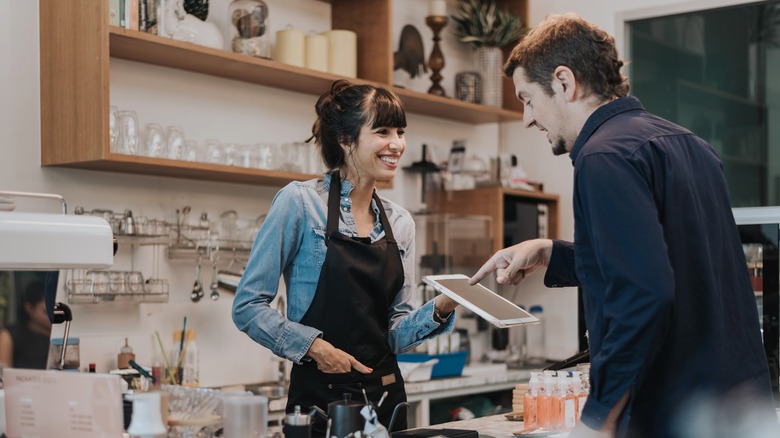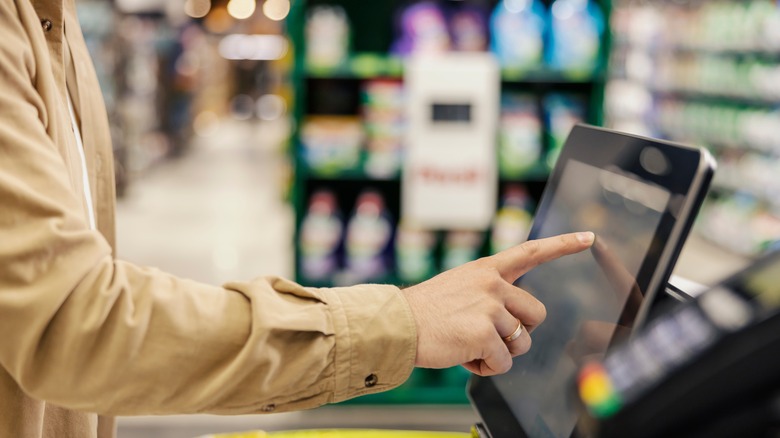What Really Happens To Self-Checkout Tips?
If you've ever given a bartender at a crowded establishment an extra buck or two after your first drink in the hope that they will serve you more quickly next time, that's the definition of a tip. The practice of tipping in the service industry originated in European coffee houses — the purpose was "to insure promptness."
When you tip at a self-serve kiosk, however, your interaction with your server or counter attendant may be minimal. There might not be any service required except handing you food or beverages that were prepared by someone else. Yet, you are still prompted to add a tip on the screen, a practice called "tip creeping." While you want the person who waited on you to benefit from your benevolence, according to CBS News, there is no proof or guarantee that the employee is getting any of that money. The experience is similar to donating to a charity with no knowledge of whether your donation is going to support the cause or the salary of the organization running the charity.
Unfortunately, unless you ask the business, there is no way to know for sure where the tips from a self-checkout will wind up. While U.S. law states that tips to employees need to go directly to the employees themselves, tips on machines aren't so clear. Your money may go to the employee. The money may go to a tip pool that will be divided among the staff. Or, the money may go for something completely unrelated.
Why do companies use self-checkout tips?
If you're at a counter that has no tip jar yet you're asked to add a cash-less gratuity to your purchase, one benefit to the business (and the employee) is there is no risk of theft. There isn't a jar filled with cash, and the employee won't be leaving work with an abundance of cash on their person. Additionally, every penny of the income is documented — which, for some, might not be a benefit. In fact, some think that tipping should be abolished altogether.
Another practical reason for the kiosk tip is because society is moving away from cash, in general. The ability to add a tip on your credit card with the press of a button is more than convenient — it's nearly effortless.
This, however, brings up a not-so-appealing side to self-checkout tips: Customers tend to feel a greater pressure to tip when prompted. One reason for this is the customer is forced to say no on the spot, and this can be extremely difficult for many people. In short, it is a sly way to guilt the customer into spending more than they intended without a guarantee that the money will wind up where they intended: in the bank account of the employee.

